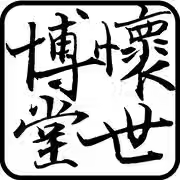


Stone Standing Bodhisattva
Longmen Grottoes
Northern Wei Dynasty, 386 – 534
Height: 53.5 cm
The fragmentary Standing Stone Bodhisattva is carved holding the right hand on the chest in a mudra. The head is slightly tilted to one side and the full face is sensitively carved. A simple crown with a central flower in front separates the braids of hair pulled up in front and forms the base of the hairdo forming an almost crown-like design on top. A scarf falls loosely over the upper body and down to the skirts covering the lower torso and legs, loosely. A belt is tied between the chest and abdomen, and the skirt is tied under the belly where the waist of the skirt is gathered.
Sculptures of this type are known to be from Longmen Grottoes in Luoyang, Henan, China. They are all fragmentary, and of a particular dark and mottled stone alternating from grey to black as seen on the back, the raw stone, and sometimes having some light brown color on the carved surface in front. Figures were cut from the caves in a particular manner, leaving the tall figure of a Bodhisattva, here, with a “V’’ shaped cross- section.
Stylistically the carving is in low relief and often has a rough texture and appearance, worn from centuries of exposure to the natural elements, wind and rain. Several illustrated examples found in different collections and museums around the world have been published in The Lost Statues of Longmen Cave, Longmen Grottoes Research Institute, by C. K. Chan, Wen Yucheng, and Wang Zhenguo, numbers 6, 9, 11, and 22.
All have characteristics similar to the exhibited Bodhisattva including the long upper torso, low waist, “s’ shaped folds on the robes or sleeves, and the shallow but sure carving of the details.
They also display a very similar patina and encrustation, although the exhibited Bodhisattva has been cleaned and waxed , having been in an American Collection, Cleveland, for many decades.
Provenance
-
Private Collection, Cleveland, Ohio (pre 1983)
-
Anunt Hengtrakul, New York, circa 1984
-
Michael B. Weisbrod, Inc., New York
-
J. Abraham Cohen Collection, New York
Published
-
Michael B. Weisbrod, Inc., Brochure, 1992.
